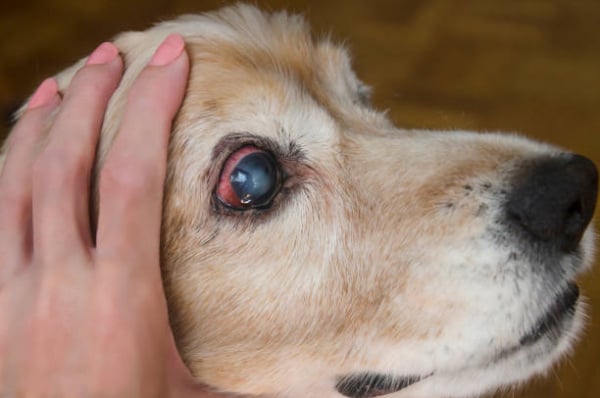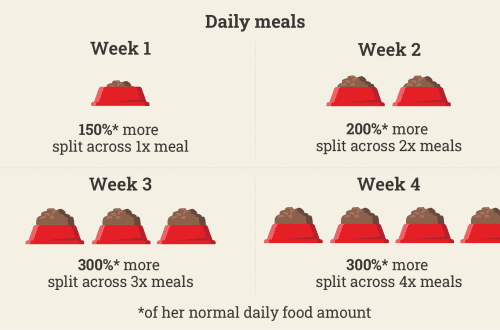
Cataracts in Dogs: Symptoms and Treatment
If one or both of your dog’s eyes look cloudy, he may have a cataract. Fortunately, the treatment of this disease in most cases gives good results.
Contents
What is cataract in dogs
Inside the eye is a transparent body called the lens. When light enters the eye, the lens focuses the light on the back of the retina. As cataracts develop, the lens becomes less transparent, resulting in blurred vision.
Cataracts can be genetically transmitted, which means that any dog is at risk for the disease. According to the American College of Veterinary Ophthalmologists, the most common disease against which cataracts develop is diabetes mellitus. An eye injury and a chronic disease or infection of the organ can also lead to the development of cataracts.
Risk Factors
While cataracts are often considered a disease of older pets, they can develop in dogs at any age. It even happens that puppies are born already with cataracts. In this case, it is considered congenital.
Some dog breeds are more susceptible to this disease than others. According to the College of Veterinary Medicine at the University of Illinois at Urbana-Champaign, breeds with an increased risk of cataracts include the Cocker Spaniel, Labrador, Poodle, Shih Tzu, Schnauzer, and Boston Terrier.

What does cataract look like in a dog?
The most noticeable symptom of cataracts is cloudy eyes in a dog. In some cases, a white spot or streak may be seen in the eye. The affected eye may even look like glass. With the development of cataracts, the cloudiness prevents light from being focused and reaching the retina, sometimes leading to loss of vision in the dog.
There are several stages of cataract in dogs. However, it is quite difficult to determine whether the disease will progress and to what extent.
Dog owners usually first notice the problem when the cataract reaches an immature stage. This means that it already covers a noticeable part of the lens – from less than half to almost its entire area. At this point, the dog usually has a deterioration in vision, but he can still compensate surprisingly well.
The previous stage of a cataract is called the initial stage. At this time, the cataract is very small and can hardly be seen with the naked eye of a non-professional. The disease that progresses and covers the rest of the healthy lens is called the mature stage. Mature cataract in both eyes leads to complete blindness.
But everything is not so simple: if the dog’s eyes are cloudy, this is not always associated with cataracts. As dogs age, the lenses of their eyes harden and may turn milky gray. This is a normal age-related change called nuclear or lenticular sclerosis and does not affect vision. A veterinarian will be able to distinguish nuclear sclerosis from cataracts, because despite their similarity, these are still different diseases.
Cataract Treatment in Dogs
Cataracts at an early stage often do not require treatment, as they do not affect the dog’s vision. However, as lens changes progress, the dog’s vision will deteriorate.
Surgical treatment of cataracts in dogs has been quite successful for several decades. Since most pets with this condition are able to compensate for the loss of vision by using other powerful senses, cataract treatment, although recommended, is not considered mandatory.
The veterinarian will most likely refer the pet to a board-certified veterinary ophthalmologist. The specialist will perform an examination, called an electroretinogram, to check the functional state of the dog’s retina, as well as an ultrasound of the eye to make sure that the retina has not detached.
Cataract in dogs: surgery
The procedure itself is a quick operation in which the surgeon makes a tiny incision to remove the affected lens. After the operation, the dog must be given the medicines prescribed by the doctor and after a while take it to a specialist for a follow-up examination. In most dogs, vision and general well-being are restored within a few days.
If surgery is not possible, it is important to control the course of the disease. A cataract can lead to lens displacement or glaucoma, both of which will require intervention.
Cataract Prevention in Dogs
The disease that is a consequence of diabetes can be prevented. The main thing is to keep the dog at a normal weight, provide him with a balanced diet containing all the necessary nutrients, and follow all the recommendations of the veterinarian.
Unfortunately, hereditary cataracts cannot be prevented. Before you take a pet from a breeder or from a shelter, you need to find out if the puppy has a hereditary disease. You can also take him to the veterinarian for examination at the first sign of any eye abnormalities or vision problems. This will keep your dog’s eyes healthy and clear in their golden years.
See also:
- How often should you take your dog to the vet?
- Does your dog have digestive problems?
- Why is the dog not eating?
- Life span of dogs





